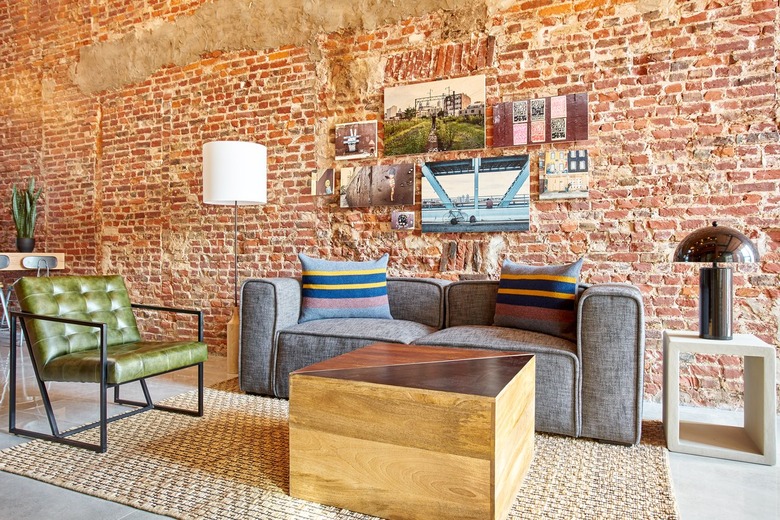How To Make Brick Glossy
We may receive a commission on purchases made from links.
Photographers love it when bricks, rocks, and roads look wet because texture and light become much more dramatic. For homeowners with brick features that have gotten tired or dull, going the glossy-finish route can bring life back to their home. A clear coating or varnish can make bricks and pavers look wet, which may or may not be the look you're after, as some folks prefer a natural-looking finish on bricks.
Before You Commit to Change
Before You Commit to Change
Bricks are porous, and that's why any paints and sealants are choices you'll live with long term. Some coatings can be acidic and harmful to bricks, so be sure any product you use is brick and mortar friendly. Putting a glossy coat on your bricks is essentially the same as painting them — there's no going back.
Choosing a Sealant for Bricks
Choosing a Sealant for Bricks
You can use oil-based or water-based sealant, but the latter is easier. Prices for sealant vary widely but keep things like coverage and longevity in mind. Look into whether it yellows with age, if it has a warranty, whether it protects from UV rays, how it handles freeze/thaw cycles, and more. Sheen levels vary; satin finish is considered a level of glossy but "wet look" is a high-gloss finish. When you're looking for a sealant for pavers and other bricks that will be walked upon, get a nonslip product.
Things Needed
-
Bristle brush and/or broom
-
Vacuum
-
Bucket
-
Dish soap or other gentle cleaner
-
Table salt
-
Sealant
-
Paint sprayer (recommended)
-
Sponges or cloths
How to Make Brick Glossy
How to Make Brick Glossy
As with any kind of painting or varnishing, weather conditions can affect how quickly or how well your job goes. When applying products outdoors, you want no wind and a 24-hour window without rain. Indoors, you'll want good ventilation; nonhumid weather is preferred for interior applications too.
1. Clean All the Brickwork
First, scrub the surface of the brick with a bristle brush or broom to release any dust and loose fragments. Vacuum up any debris. Then for any finish to adhere, remove all dirt and grime. Never use a power sprayer to clean bricks or you'll damage them. (However, some outdoor pavers are hardy enough for power spraying.)
Use a bucket of gentle soap and water and a medium-to-hard bristle brush to remove dirt and dust. For grime or soot, you can make a paste with liquid dish soap and table salt and scrub that in. Rinse the surface with water until it is free of soap and dirt. Allow it to dry thoroughly.
2. Apply the Sealer
Some sealant and varnish can be applied by brush, but it's best to apply it with a sprayer for even coating and to ensure it gets in all the nooks and crannies on the brick surface, especially if you're wanting a waterproof seal. Be aware that it's quite common for sealer to go on cloudy and then dry clear. Wear eye protection and follow manufacturer's recommendations but be aware that brick is porous and is absorbing as you spray, so coat an area thoroughly and continue to apply at that thickness throughout.
3. Wipe off the Excess and Allow the Surface to Dry
Anywhere you see drips or an excess of sealant, wipe off the excess with a clean, dry sponge or lint-free dry cloth so it dries with an even surface. Depending on your chosen product, drying time will vary. Commonly, one to three hours of drying time should suffice depending on weather conditions and how porous your bricks are.
4. Apply a Second Coat Only if Necessary
Unlike paint, you don't want to apply multiple coats of sealant because each layer needs to absorb into the bricks. Only apply it again if the substrate is so porous that it soaked up all the sealant right away. Wait 24 hours between coats. Always test a small area to ensure a second coat will be absorbed into the brick. If it's not absorbing, stick with a single coat.
5. Clean Up
Follow the manufacturer's suggestions for cleaning up. With water-based sealants, it's usually a pretty easy job of rinsing things with water and putting things away.
